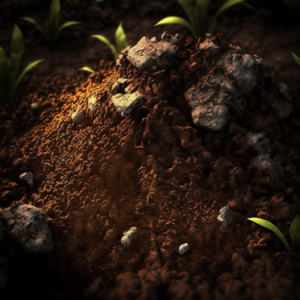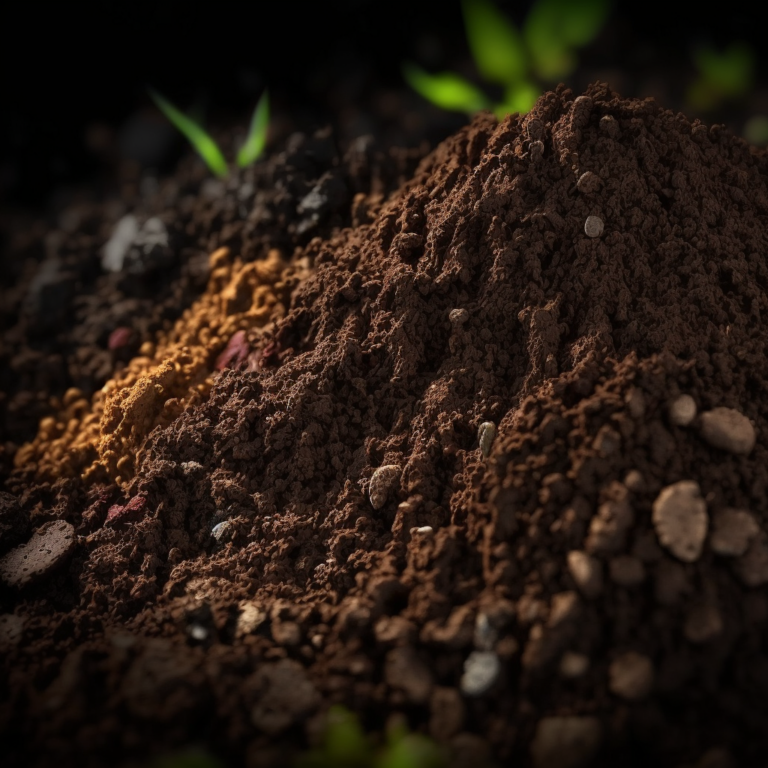We all know that water is essential for plants to grow and thrive. But, how often should we water our new plants to ensure their optimal growth? In this article, we will discuss the different factors that determine the frequency of watering new plants and provide some practical tips for achieving the best results. Let’s dive in!
Understanding Plant Water Requirements
H2O: The Lifeblood of Plants
Water is critical for plants, as it transports nutrients, aids in photosynthesis, and maintains cell structure. Without adequate water, plants become weak and susceptible to diseases and pests.
Factors Affecting Water Needs
- Type of Plant: Different plants have varying water requirements. For example, succulents need less water compared to tropical plants.
- Soil Type: Sandy soils drain quickly, requiring more frequent watering, while clay soils retain water longer, demanding less frequent watering.
- Climate and Weather: Plants need more water in hot, dry, and windy conditions, while cooler, humid weather reduces water loss through evaporation and transpiration.
- Sunlight: Plants in full sun need more water than those in shade.
Guidelines for Watering New Plants
Seedlings and Transplants
When it comes to watering seedlings and transplants, consistency is key. Keep the soil evenly moist, but not soggy. Over-watering can lead to root rot, while under-watering can stunt growth.
Container Plants
Container plants typically need more frequent watering than those in the ground. Check daily by sticking your finger into the soil; if it’s dry an inch below the surface, it’s time to water.
Trees and Shrubs
For newly planted trees and shrubs, it’s crucial to establish a deep root system. Water deeply and less frequently to encourage roots to grow downwards. A general rule is to water 1-2 times per week for the first 2-3 months.
Tips for Efficient Watering
- Water in the Morning: Watering in the morning allows plants to take up moisture before the heat of the day, reducing evaporation.
- Use Mulch: Mulching around plants helps retain moisture in the soil, reducing the need for frequent watering.
- Choose Drought-Tolerant Plants: Opt for plants that require less water to reduce the overall need for watering.
Monitoring Your Plants’ Health
Keep an eye on your plants for signs of over-watering or under-watering. Drooping leaves, yellowing foliage, and wilting are all signs that your plants may need more or less water.
The Importance of Watering New Plants
When it comes to caring for new plants, proper watering technique is essential. Water serves as the main source of nourishment for plants, carrying important nutrients throughout the plant’s system. Without adequate watering, plants can become dehydrated and wilt, leading to stunted growth or even death.

Here are some reasons why watering new plants is so important:
- Establishment: New plants need to develop strong root systems to anchor themselves in the soil and absorb water and nutrients. Proper watering helps encourage root growth, allowing the plant to establish itself in its new environment.
- Nutrient uptake: Watering helps deliver essential nutrients to the plant’s roots, allowing it to grow and develop properly. Without adequate water, the plant may struggle to take in nutrients from the soil.
- Photosynthesis: Water is also crucial for photosynthesis, the process by which plants produce energy from sunlight. Without water, the plant cannot carry out photosynthesis and will not be able to grow properly.
- Temperature regulation: Adequate water also helps regulate the temperature of the plant, keeping it from overheating during hot weather and protecting it from freezing during cold weather.
In general, new plants should be watered more frequently than established plants, especially during the first few weeks after planting. However, it’s important not to overwater, as this can lead to the development of root rot or other diseases.
To ensure that your new plants receive adequate water without drowning them, it’s important to follow proper watering techniques. Here are some tips:
- Water deeply: Instead of watering lightly every day, give your plants a deep watering once or twice a week. This helps encourage deep root growth and helps the plant better withstand drought conditions.
- Water at the right time: Water your plants in the morning or evening when temperatures are cooler. This helps prevent water from evaporating too quickly and gives the plant time to absorb the water before the heat of the day.
- Use the right amount: When watering, aim to soak the soil to a depth of about 6 inches. This will ensure that the water reaches the plant’s roots, while also allowing excess water to drain away.
By following these tips and paying close attention to your plants, you can help ensure that they receive the water they need to thrive and grow.
Signs of Underwatering and Overwatering
One of the biggest challenges for new plant owners is figuring out the right watering schedule. Overwatering or underwatering can have serious consequences for the health of your plants. Here are some signs to look out for:
Signs of Underwatering
- Wilting or drooping leaves
- Dry or brittle leaves that are brown at the tips or edges
- Slow growth or stunted growth
- Yellowing leaves, especially at the bottom of the plant
- Soil that is visibly dry or pulling away from the edges of the pot
If you notice these signs, your plant may be thirsty and in need of some watering.
Signs of Overwatering
- Yellowing leaves, especially near the top of the plant
- Soft, mushy leaves that may fall off easily
- Mold or fungus growing on the soil surface
- Soil that is consistently wet or soggy
- Foul odor coming from the soil or plant
If you see these signs, your plant may be receiving too much water.
Proper watering takes some practice, so don’t be discouraged if you make mistakes at first. It’s always better to err on the side of underwatering, as too much water can be particularly harmful to new plants. Observe your plant regularly and adjust your watering schedule as needed.
General Guidelines for Watering New Plants
When it comes to watering new plants, it’s important to strike a balance between overwatering and underwatering. Here are some general guidelines to follow:

- Soil type: The amount of water your plant needs will depend on the type of soil it’s planted in. Sandy soil drains faster and requires more frequent watering, while clay soil retains moisture and may only need to be watered once a week.
- Plant type: Different plants have different water requirements. For example, succulents and cacti can go for long periods without water, while ferns and tropical plants need to be kept consistently moist.
- Climate: The climate you live in will also impact how often you need to water your plants. In hot, dry climates you may need to water more frequently, while in cooler, more humid climates you may be able to water less.
- Time of year: During the growing season, plants generally need more water than they do during the dormant season. Monitor your plants closely and adjust your watering schedule as needed.
- Check the soil: Before watering your plants, check the soil moisture level. Stick your finger into the soil about an inch deep – if it feels dry, it’s time to water. If it feels moist, hold off for a few days.
- Water deeply: When you do water, make sure to water deeply. This means giving the plant enough water so that it soaks down to the roots. Shallow watering can lead to weak, shallow roots and a less healthy plant.
By following these general guidelines and monitoring your plants closely, you’ll be able to give them the right amount of water they need to thrive. Remember, each plant is unique and may require its own specific watering schedule, so be prepared to adjust accordingly.
Thanks for the reminder. Here’s the section on “How to Check Soil Moisture Level”.
How to Check Soil Moisture Level
Checking the soil moisture of your new plants is important to ensure that they receive the right amount of water. Here are some ways to check the moisture level in the soil:
- Visual Inspection: One of the easiest ways to check soil moisture is to examine the soil closely. If it looks dry and feels crumbly, it’s time to water your plant. If the soil looks and feels wet, let it dry out a bit before providing more water.
- Finger Test: Another simple method to check soil moisture is by using your finger. Insert your finger into the soil about an inch deep. If the soil feels dry or slightly moist, it’s time to water the plant. On the other hand, if the soil feels very wet or muddy, hold off on watering.
- Moisture Meter: A moisture meter is a tool that measures the moisture level of soil. Simply stick the probe into the soil and it will display the current moisture level. This is a more accurate way to determine when to water new plants, especially if you’re unsure about your visual inspection or finger test.
It’s important to note that overwatering can be just as harmful to new plants as underwatering. Therefore, it’s crucial to get the right moisture level for your plant. Following these simple methods will help ensure that your new plants receive the right amount of water and thrive under your care.
Watering Techniques for Different Types of Plants
Different types of plants have different water requirements depending on their species, age, and environment. Here are some general tips on watering techniques for different types of plants:
Succulents and Cacti
Succulents and cacti generally require less water than other plants. They are adapted to dry environments and store water in their thick leaves and stems. It’s important to water them only when the soil is completely dry. Overwatering can cause their roots to rot, leading to their eventual demise.
Houseplants
Houseplants, such as spider plants and philodendrons, are the most common indoor plants. They thrive in well-drained soil and bright, indirect sunlight. When watering houseplants, ensure that the pot has drainage holes to prevent water from accumulating at the bottom. Water the soil and not the leaves, preferably in the morning or evening.
Vegetable Gardens
Vegetable gardens may require more water than other plants, especially during the hot summer months. They need about one inch of water per week, depending on the type of soil, amount of rainfall and heat. It’s better to water deeply but less frequently, rather than shallowly and often. This encourages deeper root growth and helps the plants survive drought-like conditions.
Trees and Shrubs
Trees and shrubs require deep watering to establish their root systems. Newly planted trees and shrubs should be watered frequently during the first year of growth. Mature trees and shrubs only need to be watered during prolonged droughts. Water them slowly and deeply, so that the water penetrates the soil and reaches the roots.
Annuals and Perennials
Annuals and perennials, such as daisies and roses, require consistent moisture for their survival. It’s better to water them in the morning, so that the leaves have time to dry before the evening. Wet leaves overnight can encourage fungal diseases.
Orchids
Orchids require a different watering technique that’s unique to their epiphytic nature. They need to be mounted on a bark-like substrate, with air circulating around their roots. They require misting their roots daily and watering in the morning or evening with a diluted fertilizer solution.
By following these watering techniques for different types of plants, you can help ensure your plants grow healthy and strong. Remember to always check the soil moisture before watering, as over-watering can be as bad as not watering enough.
Sorry, my mistake. Here’s the corrected prompt:
Tips for Watering New Plants in Containers
When it comes to watering new plants in containers, there are a few things to keep in mind. Proper watering is crucial for the growth and health of your plants, and overwatering or underwatering can lead to problems such as root rot or wilting. Here are some tips to help you water your new container plants:
- Understand your plant’s water needs: Different plants have different water needs, so it’s important to do some research on the specific type of plant you have and how much water it requires. Factors such as size, soil type, and climate can also affect how much water your plant needs.
- Check the soil moisture level: Use your finger to test the moisture level of the soil by inserting it about an inch deep into the soil. If the soil feels dry, it’s time to water; if it feels moist, wait a day or two before checking again.
- Water deeply and thoroughly: When you do water, make sure to water deeply and thoroughly, allowing the water to penetrate the root zone of the plant. This will encourage deeper root growth and help the plant become more drought-tolerant.
- Use the right watering method: Depending on the type of container you’re using and the plant you’re growing, different watering methods may be more effective. For example, a drip irrigation system may work well for a plant that needs consistent moisture, while a watering can or hose might be better for those that prefer drier conditions.
- Don’t water too often: It’s important not to water your plant too often, as this can lead to overwatering and other problems. Instead, aim for a consistent watering schedule based on your plant’s specific needs.
By following these tips, you can help ensure that your new container plants get the proper amount of water to thrive and grow.
Dealing with Extremes: Watering New Plants in Hot or Cold Weather
When it comes to watering new plants during hot or cold weather, it’s important to remember that extremes in temperature can impact your plants’ needs. Here are some tips to help you deal with these challenges:
Hot Weather
During hot weather, your plants may require extra attention to keep them healthy, hydrated, and thriving. Here’s what you need to know when dealing with high temperatures:
- Water regularly: Plants need water to survive, and even more so during hot weather. Be sure to water your new plants regularly, preferably in the morning or evening to avoid evaporation.
- Increase watering frequency: If the temperature is extremely hot, you may need to increase the watering frequency. However, be careful not to overwater your plants, as this can lead to root rot.
- Provide shade: You can provide temporary shade to your plants by placing them under a canopy, umbrella, or any shaded area in your garden. This will help protect them from direct sunlight and reduce the rate of water evaporation.
Cold Weather
During cold weather, your plants may become dormant and require less water. However, there are still a few things you should keep in mind:
- Be careful not to overwater: Overwatering during cold weather can be just as damaging as under-watering. Before watering, check the soil moisture level and only water if it feels dry to the touch.
- Provide proper drainage: Plants in cold weather require proper drainage to prevent root rot. Be sure that your pots have adequate drainage holes to allow for excess water to drain out.
- Monitor the temperature: If the temperature drops below freezing, your plants may require extra protection. Cover the plants with a cloth or blanket to protect them from frost damage.
By following these tips, you can help your new plants thrive in hot or cold weather conditions. Keep in mind that every plant is different and may have unique needs, so always monitor your plants and adjust accordingly.
Conclusion
In conclusion, the frequency of watering new plants depends on various factors, such as plant type, soil, climate, and sunlight. By understanding these factors and monitoring your plants’ health, you can create the optimal watering schedule to ensure your new plants thrive.
Frequently Asked Questions
How do I know if my plants need more water?
If the leaves are drooping, wilting, or turning yellow, your plants may need more water.
How can I conserve water when watering my plants?
Use mulch, water in the morning, and choose drought-tolerant plants to conserve water.
Should I water new plants every day?
It depends on the type of plant, soil, and climate. Check the soil moisture and adjust your watering schedule accordingly.
How deep should I water new trees and shrubs?
Water deeply and less frequently to encourage a strong root system. Aim for 1-2 times per week for the first 2-3 months.
Is it better to water with a hose or watering can?
Both methods can be effective, but using a hose with a slow-flowing nozzle or a soaker hose can provide a more controlled, even watering. A watering can is ideal for smaller plants and container gardens.


I always struggle with knowing how often to water new plants. This article gave me some great guidelines to follow. Thanks!